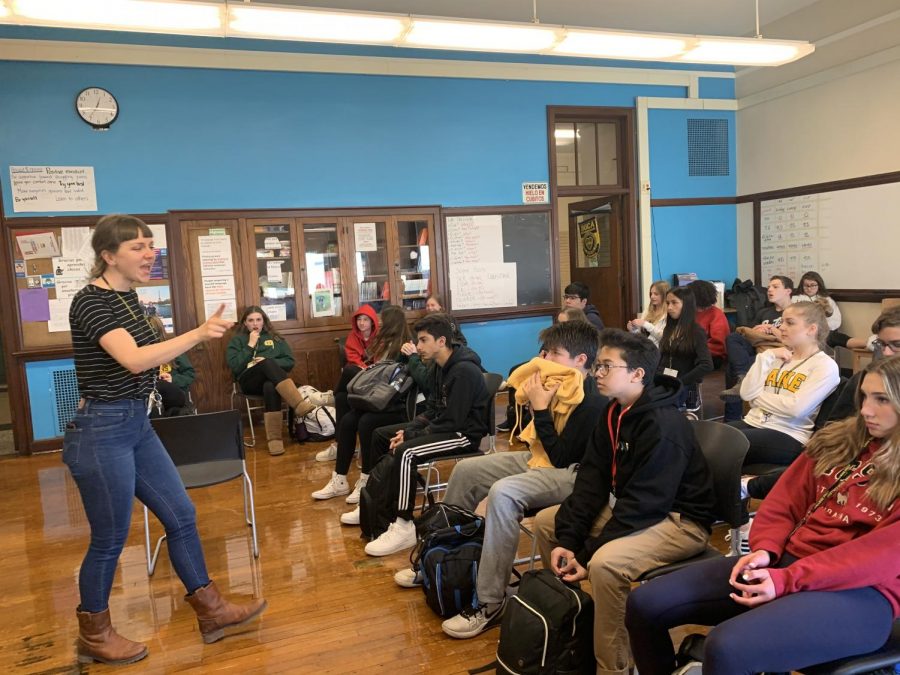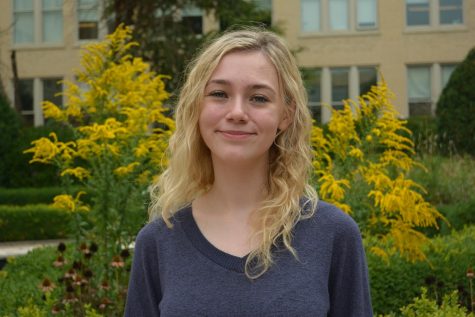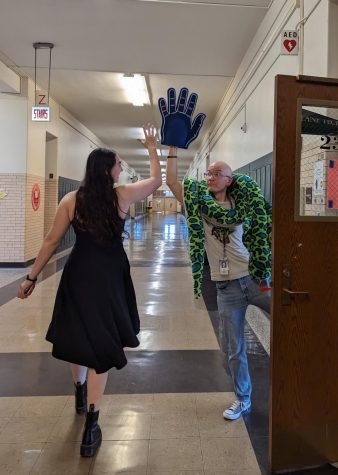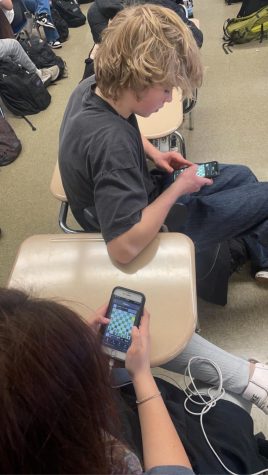Unique teaching styles challenge the norm
November 18, 2019
Amira Imperial sits down in her first period AP English Literature class as the teacher announces that the students will be in groups, discussing the reading they were assigned the night before. Next period, in her history class, the students have their textbooks open on their desks, taking notes about the American Revolution. As Imperial goes through her day, she moves between various classes and teaching styles.
Nearly every teacher, especially in a school as large as Lane, has different teaching methods and techniques.
Mr. Parsons, an AP Psychology teacher, said that teaching methods typically fall into two categories: traditional or progressive.
Traditional teaching tends to be teacher-based, typically believing that teachers are the source of all knowledge for students. Progressive teaching, which stems from The Dewey Teaching Theory, tends to take a more “hands-on” approach, often giving students the freedom to discover knowledge themselves.
Parsons, who has been teaching for nineteen years, said he has noticed a shift in teaching styles. When he first began teaching at Lane the focus was on lecturing.
“If administration walked into a classroom, and they saw students sitting in groups talking about something, there were comments made to the teacher that that’s not real teaching,” Parsons said.
Parsons said that while he believes he uses a more traditional approach, he tries to incorporate a mixture of both teaching styles in his classroom.
“As a teacher, you have to strike a balance between encouraging kids to find their voice and work well with other students and not putting kids in a situation where they feel overwhelmed, intimidated or nervous,” Parsons said. “It’s always a balancing act.”
While Parsons prefers a more traditional style, some teachers have abandoned tradition for more progressive ideas.
Ms. Ramovic has been teaching Honors Spanish for two years. She believes that the focus of language classes should be to teach students how to communicate in the language they are learning, either in meaningful or informative ways.
“If those two things aren’t there if you’re just talking about language in English, if you’re doing grammar conjugation, you’re not actually using the language for what it was made for, which is to communicate,” Ramovic said.
Ramovic chooses not to have desks in her classroom and instead has her students sit in rows of chairs, which she believes encourages students to be more mobile and engaged.
One tactic that Ramovic uses to maintain engagement in her classroom is the use of “brain breaks,” where students can stand up, move around and stretch.
“I’m able to hold students accountable to higher standards of participation and engagement because that’s all the class is,” Ramovic said. “That’s what it has to be.”
Parsons and Ramovic shared that they have preferences for how they choose to teach and students have found that they learn better with certain teaching styles as well.
Imperial, Div. 050, has been at Lane for six years. In her time here, she said she has experienced a variety of different teaching styles.
Imperial said she enjoys progressive teaching environments, especially for English and language subjects.
In LTAC, Imperial had a teacher whose teaching style she said was very progressive.
“Every so often we would have group discussions about how he could improve this classroom so that everyone feels more comfortable,” Imperial said. “It really put us on a more even playing ground, with him, the teacher.”
Imperial has noticed that teaching styles often differ based on the subject being taught, and her preferences for how she is taught change based on the class as well.
“I think there’s a time and place for everything,” Imperial said. “I don’t think we should just abandon traditionalism, but I do think there needs to be interaction in learning environments.”
Noble Bautista, Div. 056, who was previously an Alpha student, said that he has noticed a difference between the way Alpha and Core courses are taught.
“I would say Alpha is more rote, more straightforward and less progressive,” Bautista said.
Like Imperial, Bautista said his preferences for teaching change depending on the subject being taught.
While some teachers may be changing the way they choose to teach, teachers and students both agree: when it comes to learning, the most important part is to ensure they are comfortable in their environment.
“I think kids should be exposed to all different sorts of teaching styles and I think teachers do their best when they’re given the freedom and latitude to teach the course in a style that is comfortable to them,” Parsons said.







